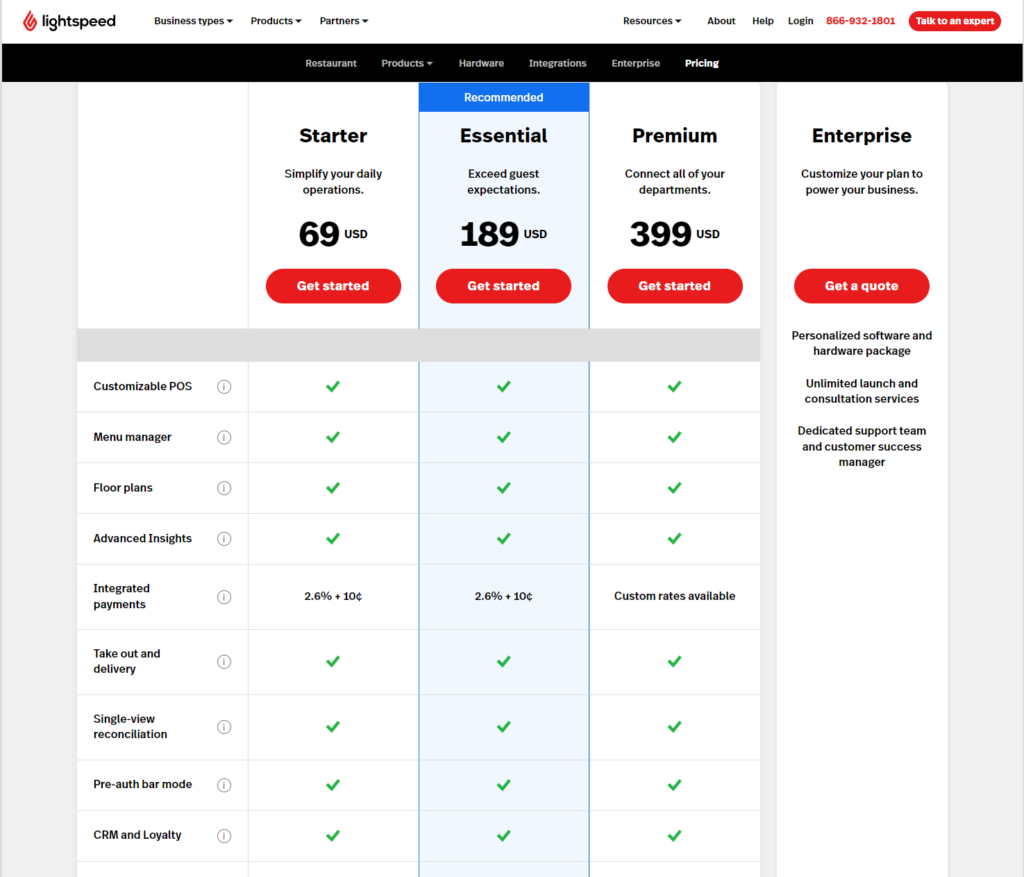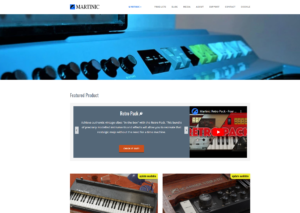Lightspeed POS is a sophisticated point-of-sale system designed for retail and hospitality businesses. Known for its advanced features and customization options, Lightspeed POS is a popular choice for businesses that need a comprehensive and scalable solution. This article provides an in-depth review of Lightspeed POS, covering its features, pricing, pros and cons, and overall performance.
What Lightspeed POS Offers
Lightspeed POS is tailored to meet the needs of both retail and hospitality businesses, offering a range of features that help streamline operations, manage inventory, and enhance customer experience. Here’s a closer look at its core offerings:
1. Advanced Inventory Management
Lightspeed POS excels in inventory management, offering features like real-time tracking, multi-location support, and advanced reporting. Users can manage complex inventory needs, including variations, bundles, and custom items. The system provides insights into stock levels, trends, and reorder points, helping businesses optimize their inventory and reduce waste.
2. Customizable POS Interface
The POS interface is highly customizable, allowing businesses to tailor the system to their specific needs. Users can configure the layout, add custom buttons, and set up workflows that match their operational processes. This level of customization ensures that the POS system fits seamlessly into the business’s existing operations.
3. Customer Relationship Management (CRM)
Lightspeed POS includes robust CRM tools that enable businesses to track customer interactions, purchase history, and preferences. The system supports loyalty programs, targeted marketing campaigns, and personalized promotions, helping businesses build stronger relationships with their customers.
4. Comprehensive Reporting and Analytics
The platform offers in-depth reporting and analytics capabilities. Users can access a wide range of reports, including sales performance, inventory levels, and employee productivity. These insights help businesses make data-driven decisions and identify opportunities for growth.
5. Employee Management
Lightspeed POS includes features for managing employees, such as time tracking, scheduling, and performance monitoring. The system supports various roles and permissions, allowing businesses to control access to sensitive information and streamline staff management.
6. Integration and Add-Ons
Lightspeed POS integrates with numerous third-party applications and services, including accounting software, e-commerce platforms, and marketing tools. This integration capability extends the system’s functionality and allows businesses to create a tailored solution that meets their specific needs.
7. Multi-Location Support
For businesses with multiple locations, Lightspeed POS offers centralized management features. Users can manage inventory, sales, and customer data across all locations from a single dashboard, providing a unified view of operations and performance.
Pricing

Lightspeed POS offers several pricing tiers, each designed to cater to different business sizes and needs. Below is an overview of the available plans and their costs:
| Plan | Price | Features |
|---|---|---|
| Lightspeed Retail | Starts at $69/month | Basic POS functionalities, inventory management, customer management, reporting, and integrations. |
| Lightspeed Restaurant | Starts at $69/month | POS features tailored for the hospitality industry, including table management, menu customization, and advanced reporting. |
| Lightspeed Advanced | Custom Pricing | Includes all features from the Retail and Restaurant plans, plus advanced analytics, dedicated support, and additional customization options. |
Payment Processing Fees:
- Card Present Transactions: Varies based on payment processor
- Card Not Present Transactions: Varies based on payment processor
- Custom Rates: Available for businesses with higher sales volumes
Pros and Cons
Pros:
- Advanced Inventory Management: Comprehensive tools for managing complex inventory needs and multi-location operations.
- Highly Customizable: The POS interface can be tailored to fit specific business processes and preferences.
- Robust CRM Features: Effective tools for managing customer relationships, loyalty programs, and targeted marketing.
- In-Depth Reporting: Detailed analytics and reporting capabilities for making informed business decisions.
- Integration Capabilities: Supports numerous third-party applications and services for enhanced functionality.
Cons:
- Cost: The pricing can be high, especially for the more advanced plans, which may be a concern for smaller businesses.
- Complexity: The system’s advanced features and customization options can be overwhelming for users who require a simpler solution.
- Additional Costs: Payment processing fees and additional hardware costs may add to the overall expense.
- Learning Curve: The extensive range of features may require a significant amount of time for training and implementation.
Summary
Lightspeed POS is a powerful and flexible point-of-sale system designed to meet the needs of both retail and hospitality businesses. Its advanced inventory management, customizable interface, and robust CRM features make it a strong choice for businesses looking for a comprehensive and scalable solution.
While the cost and complexity of the system may be a drawback for some smaller businesses or those with simpler needs, the overall value that Lightspeed POS offers makes it a compelling option for businesses that require a sophisticated POS solution. For those seeking a versatile and feature-rich system, Lightspeed POS is certainly worth considering.







